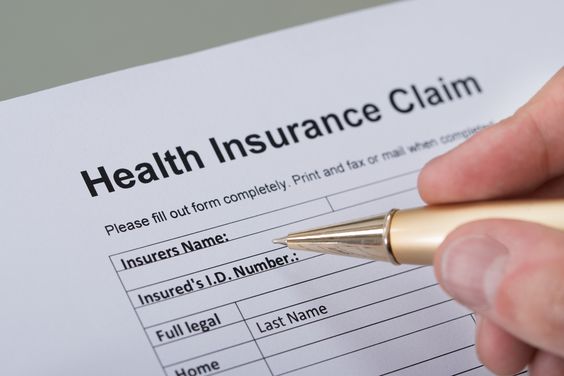In the complex world of insurance, few processes are as critical and potentially confusing as dealing with an insurance claim check. Whether you’re facing property damage, a car accident, or a health-related claim, understanding how to navigate the claim check process is essential for ensuring you receive fair compensation and can recover from your loss efficiently. This comprehensive guide will walk you through every aspect of insurance claim checks, from filing your claim to cashing and using your settlement funds.
1. Understanding Insurance Claim Checks
Insurance claim checks are payments issued by insurance companies to policyholders or designated parties as compensation for covered losses. These checks are the tangible result of the claims process and represent the fulfillment of the insurance contract’s promise to protect the insured against financial loss.
Types of Insurance Claim Checks
Insurance claim checks can come in various forms, depending on the type of insurance and the nature of the claim:
- Property Insurance Checks: Issued for damage to homes, buildings, or personal property.
- Auto Insurance Checks: Provided for vehicle damage or theft.
- Health Insurance Checks: Sometimes issued for reimbursement of out-of-pocket medical expenses.
- Life Insurance Checks: Paid to beneficiaries upon the death of the insured.
- Disability Insurance Checks: Issued to replace lost income due to disability.
Understanding the type of claim check you’re dealing with is crucial, as it can affect how the check is issued, who needs to endorse it, and how it can be used.
The Anatomy of an Insurance Claim Check
An insurance claim check typically includes several key elements:
- Payee Name(s): The individual(s) or entity to whom the check is made out.
- Amount: The total sum being paid out for the claim.
- Claim Number: A unique identifier for your specific claim.
- Policy Number: Your insurance policy number.
- Date: When the check was issued.
- Memo Line: May include details about what the payment is for.
It’s crucial to verify all this information for accuracy when you receive your check.
2. The Journey of an Insurance Claim: From Incident to Check
Understanding the path from the initial incident to receiving your claim check can help you navigate the process more effectively and set realistic expectations for timing and outcomes.
Step 1: Reporting the Incident
The claim process begins when you report an incident to your insurance company. This should be done as soon as possible after the event occurs. Many insurers now offer multiple reporting options, including:
- Phone calls to claims hotlines
- Online claim forms
- Mobile apps for quick reporting
When reporting, be prepared to provide:
- Your policy number
- Date and time of the incident
- A brief description of what happened
- Any immediate estimates of damage or loss
Quick reporting can expedite the claims process and may be required by your policy terms.
Step 2: Claim Investigation
Once your claim is reported, the insurance company assigns an adjuster to investigate. The adjuster’s role includes:
- Assessing the damage or loss
- Reviewing policy coverage
- Gathering evidence (photos, police reports, witness statements)
- Determining the value of the claim
During this phase, it’s important to:
- Cooperate fully with the adjuster
- Provide any requested documentation promptly
- Keep detailed records of all communications
- Document your losses thoroughly
The investigation phase can vary in length depending on the complexity of the claim. According to the Insurance Information Institute, most standard claims are settled within 30 days, but complex cases may take longer.
Step 3: Claim Evaluation and Decision
After the investigation, the insurance company evaluates the claim and makes a decision. This decision will fall into one of three categories:
- Approval: The claim is accepted, and a settlement is offered.
- Partial Approval: Part of the claim is approved, while other parts may be denied.
- Denial: The entire claim is rejected.
If your claim is approved or partially approved, you’ll receive a settlement offer. It’s important to review this offer carefully and understand what it covers. Don’t hesitate to ask questions or negotiate if you believe the offer is inadequate.
Step 4: Check Issuance
Once a settlement is agreed upon, the insurance company issues the claim check. The time from settlement agreement to check issuance can vary, but it typically takes 7-10 business days. Factors that can affect this timeline include:
- The payment method (electronic transfer vs. physical check)
- Any required approvals or signatures
- The complexity of the claim
Some insurers offer expedited payment options for certain types of claims, particularly those involving essential living expenses or emergency repairs.
3. Navigating Common Challenges with Insurance Claim Checks
While the basic process of receiving an insurance claim check may seem straightforward, various challenges can arise. Being prepared for these potential issues can help you navigate them more effectively.
Multiple Payees on the Check
In some cases, particularly with property insurance claims, the check may be made out to multiple parties. This often includes:
- The policyholder
- The mortgage lender (if the property is financed)
- A contractor (in some cases)
When multiple payees are listed, all parties typically need to endorse the check before it can be cashed or deposited. This can lead to delays and complications, especially if one party is uncooperative or difficult to reach.
To navigate this:
- Communicate with all parties in advance about the expected process.
- Be prepared to provide documentation to your mortgage lender to release funds.
- Consider setting up a joint escrow account for the funds if working with a contractor.
Partial Payment Issues
Sometimes, an insurance company may issue partial payments as the claim progresses. This can happen when:
- Initial emergency repairs need to be made quickly
- The full extent of damages is still being assessed
- There are disputes over certain aspects of the claim
When dealing with partial payments:
- Keep detailed records of each payment received
- Understand what each payment is intended to cover
- Don’t sign any releases or waivers without fully understanding their implications
Dealing with Claim Denials
If your claim is denied, you have options:
- Request a detailed explanation of the denial in writing.
- Review your policy carefully to understand your coverage.
- Gather additional evidence to support your claim.
- File an appeal with your insurance company.
- Consider hiring a public adjuster or attorney if the dispute continues.
According to the National Association of Insurance Commissioners, about 1% of all insurance claims are denied. While this percentage is low, it represents thousands of claims annually, making it crucial to understand your rights and options.
4. Maximizing Your Insurance Claim Check
Getting the most out of your insurance claim check requires a combination of preparation, negotiation skills, and understanding of your policy and rights.
Thoroughly Document Your Losses
The foundation of a successful claim is thorough documentation. This includes:
- Detailed inventory of damaged or lost items
- Photographs and videos of damage
- Receipts for purchases and repairs
- Professional appraisals for high-value items
Keep in mind that the burden of proof is on you, the policyholder, to demonstrate the extent of your loss.
Understand Your Policy’s Fine Print
Your insurance policy is a contract, and understanding its details can significantly impact your claim. Pay attention to:
- Coverage limits and sublimits
- Deductibles
- Exclusions
- Special provisions (e.g., replacement cost vs. actual cash value)
A study by Marshall & Swift/Boeckh found that 59% of American homes are underinsured by an average of 22%. Understanding your policy can help you avoid surprises during the claims process.
Negotiate Effectively
Don’t be afraid to negotiate your settlement. Tips for effective negotiation include:
- Be prepared with documentation and research
- Stay calm and professional
- Focus on facts rather than emotions
- Be willing to compromise, but also stand firm on fair compensation
- Consider getting multiple repair estimates
Know When to Seek Professional Help
In complex or high-value claims, professional assistance can be invaluable. Consider hiring:
- A public adjuster: Works on your behalf to assess damages and negotiate with the insurance company
- An attorney: Necessary if legal action becomes required
While these professionals charge fees (often a percentage of the claim), they can potentially increase your settlement significantly. A study by the Office of Program Policy Analysis and Government Accountability found that policyholders who used public adjusters received settlements 747% higher than those who didn’t in catastrophe-related claims.
5. Managing and Using Your Insurance Claim Check
Once you receive your insurance claim check, managing and using the funds appropriately is crucial for a smooth recovery process.
Endorsing and Depositing the Check
Before you can use the funds, you need to properly endorse and deposit the check. Steps include:
- Verify all information on the check for accuracy.
- Ensure all required parties have endorsed the check.
- Choose between depositing the check or cashing it (depositing is usually safer and more convenient).
- Be prepared for potential holds on large checks (banks may place holds on insurance checks over a certain amount).
Allocating Funds Appropriately
It’s important to use the claim funds for their intended purpose. This typically means:
- Making necessary repairs or replacements
- Paying for temporary housing if required
- Settling medical bills in the case of injury claims
Keep detailed records of how you spend the funds, as this may be necessary for tax purposes or if the insurance company requests an accounting.
Tax Implications of Insurance Claim Checks
Insurance claim checks can have tax implications, depending on the nature of the claim and how the funds are used. General guidelines include:
- Reimbursement for property damage or loss is typically not taxable if the payment doesn’t exceed the adjusted basis of your property.
- If you receive more than your adjusted basis, the excess may be taxable as capital gain.
- Payments for lost wages or business income are usually taxable.
Always consult with a tax professional for advice on your specific situation.
Dealing with Contractors and Repairs
If your claim involves property repairs:
- Get multiple estimates from licensed contractors.
- Never pay the full amount upfront; structure payments based on completion of work.
- Ensure contractors are properly insured and bonded.
- Get all agreements in writing, including scope of work and timelines.
- Keep your insurance company informed of repair progress, especially if they’re releasing funds in stages.
6. Preventing Future Claim Issues
While navigating a current claim is important, taking steps to prevent future claim issues can save you significant stress and potentially financial loss.
Regularly Review and Update Your Policies
Insurance needs change over time. Regularly reviewing your policies helps ensure you have adequate coverage. Consider:
- Annual policy reviews with your insurance agent
- Updating coverage limits to reflect home improvements or new purchases
- Adjusting deductibles based on your current financial situation
- Adding or removing coverage based on life changes (e.g., getting married, having children)
Maintain Detailed Home and Property Inventories
Keeping an up-to-date inventory of your possessions can significantly streamline future claims processes. Tips include:
- Use digital tools or apps designed for home inventories
- Take photos or videos of valuable items
- Keep receipts for major purchases
- Store inventory information in a secure, off-site location or cloud storage
Implement Risk Mitigation Strategies
Taking steps to reduce the likelihood of needing to file a claim can help keep your premiums lower and avoid the hassle of the claims process. Consider:
- Installing security systems and smoke detectors
- Implementing storm mitigation measures in high-risk areas
- Regular maintenance of your home and vehicles
- Following safety guidelines to prevent personal injury
Many insurance companies offer discounts for implementing these risk mitigation strategies, providing both immediate and long-term benefits.
Navigating the insurance claim check process can be complex, but with the right knowledge and approach, you can ensure you receive fair compensation for your losses and use the funds effectively for recovery. Remember these key points:
- Understand the entire claims process, from incident reporting to check issuance.
- Be prepared for potential challenges, such as multiple payees or partial payments.
- Document thoroughly and understand your policy to maximize your claim.
- Manage your claim check responsibly, considering tax implications and proper fund allocation.
- Take proactive steps to prevent future claim issues.
By mastering the insurance claim check process, you not only protect yourself financially in times of loss but also gain peace of mind knowing you can navigate the complexities of insurance claims effectively. Whether you’re dealing with a current claim or preparing for potential future incidents, this knowledge empowers you to make informed decisions and advocate for your rights as a policyholder.
Remember, while insurance can be complicated, it’s a vital tool for financial protection. By staying informed and proactive, you can ensure that when you need it most, your insurance will serve its intended purpose: providing you with the financial support to recover and move forward.



